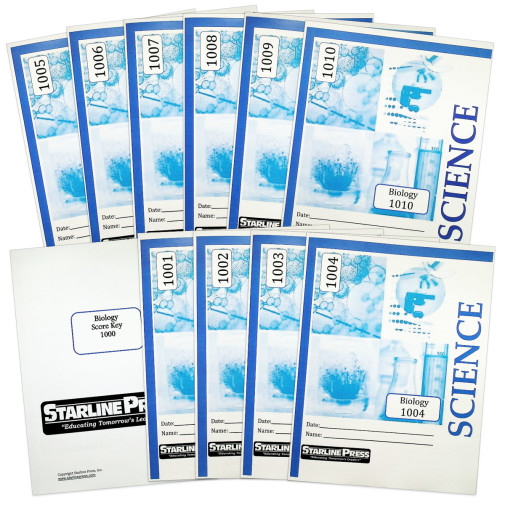We use cookies to make your experience better. To comply with the new e-Privacy directive, we need to ask for your consent to set the cookies. Learn more.
Biology Set
Biology: The beginning of biology, the attributes of life and the meaning of science lays the foundation of this course. Students also study matter, acids, bases, buffers, energy, lipids and proteins. Differentiation of cells, sexual reproduction, linked genes, DNA and DNA structure, protein construction, mutations, pedigrees and the Human Genome Project are studied. Body system foundation including the nervous system, endocrine system, reproductive system, digestive system, excretory system, and muscular system is learned. Students record and analyze observations, conduct calculations, use tables and graphs, apply concepts, formulate hypothesis, and design experiments. Lab Supplies needed include Elodea sprigs, aquarium (or beakers), microscope, microorganism reference chart, dropper pipettes, test tubes, glass slides and cover slips, test tube rack, graduated cylinder and beakers.
Tenth grade students study the beginning of biology, the attributes of life, and the meaning of science. They study matter, acids, bases, buffers, energy, lipids and proteins. They study differentiation of cells, sexual reproduction, linked genes and traits, incomplete and multiple gene inheritance, and sex linked genes. Students learn about DNA and DNA structure, protein construction, mutations, pedigrees, and the Human Genome Project. Tenth grade students study the foundation of body systems including the nervous system, endocrine system, reproductive system, digestive system, excretory system, and muscular system. They record and analyze observations, conduct calculation, use tables and graphs, apply concepts, formulate hypothesis, and design experiments.
Items listed in this section tend to be complete science programs with a teacher and student component, requiring few supplements besides science supplies.
Starline Press Science is a character-based, state standards aligned, individualized and independent learning curriculum. Each grade level provides self-directed instruction with minimal teacher supervision. Grades 3-8 complete twelve units (booklets) per year, with a suggested 3-week completion timeframe per booklet. Grades 9-11 complete 10 booklets per year. Each grade level incorporates vocabulary lists, fill in the blank questions, chapter reviews, unit review/tests, and labs at most levels. Consumable worktexts are colorfully illustrated soft covers, although newer printings are more like booklets and do not have the perfect binding and glossy covers. Please see publisher website for CA state standards correlation. Available only in complete sets with answer/test keys. ~ Deanne
| Product Format: | Softcover Book Set |
|---|---|
| Brand: | Starline Press |
| Grade: | 10 |
| Length in Inches: | 11 |
| Width in Inches: | 8.75 |
| Height in Inches: | 2 |
| Weight in Pounds: | 3.3875 |

